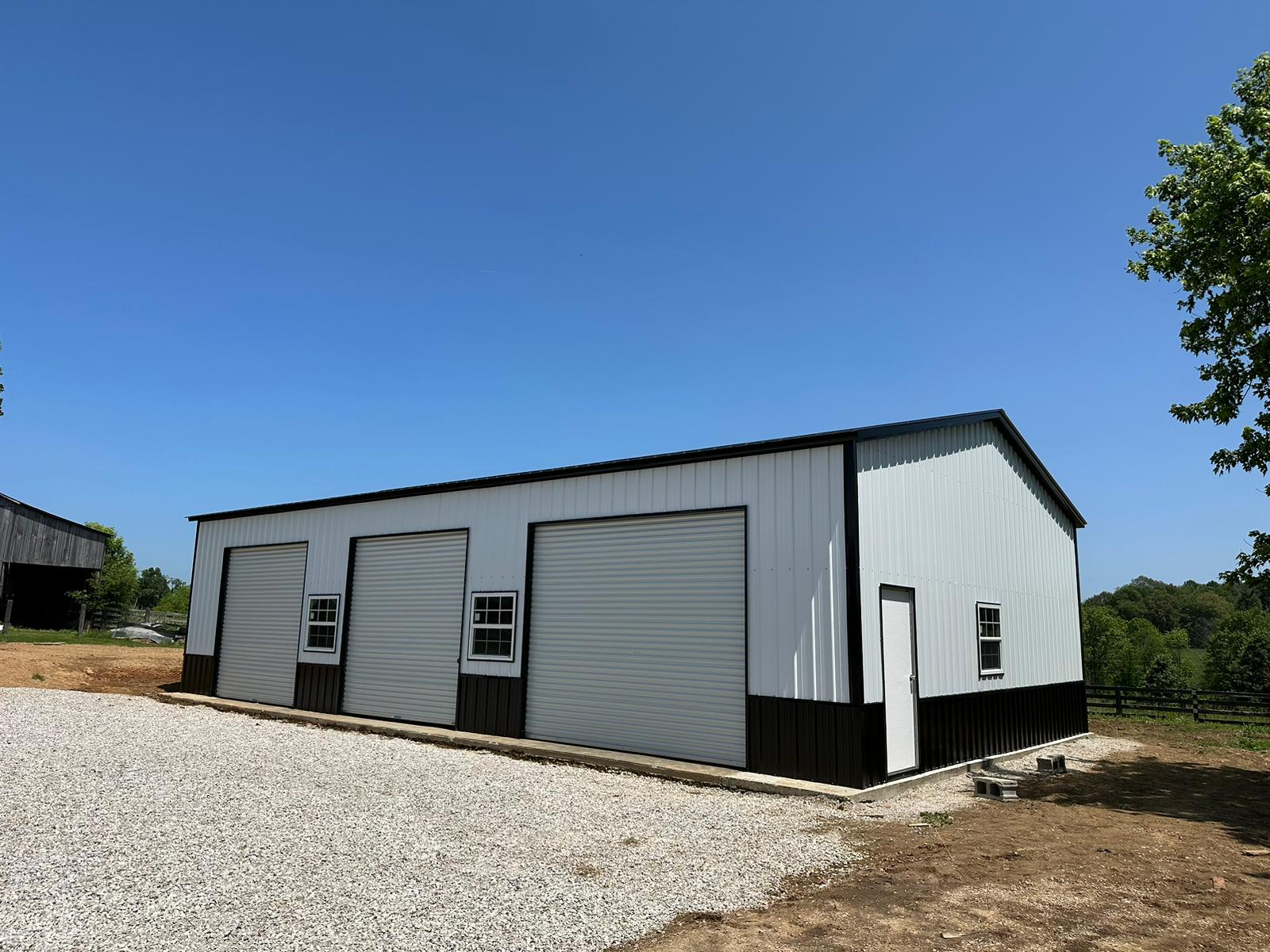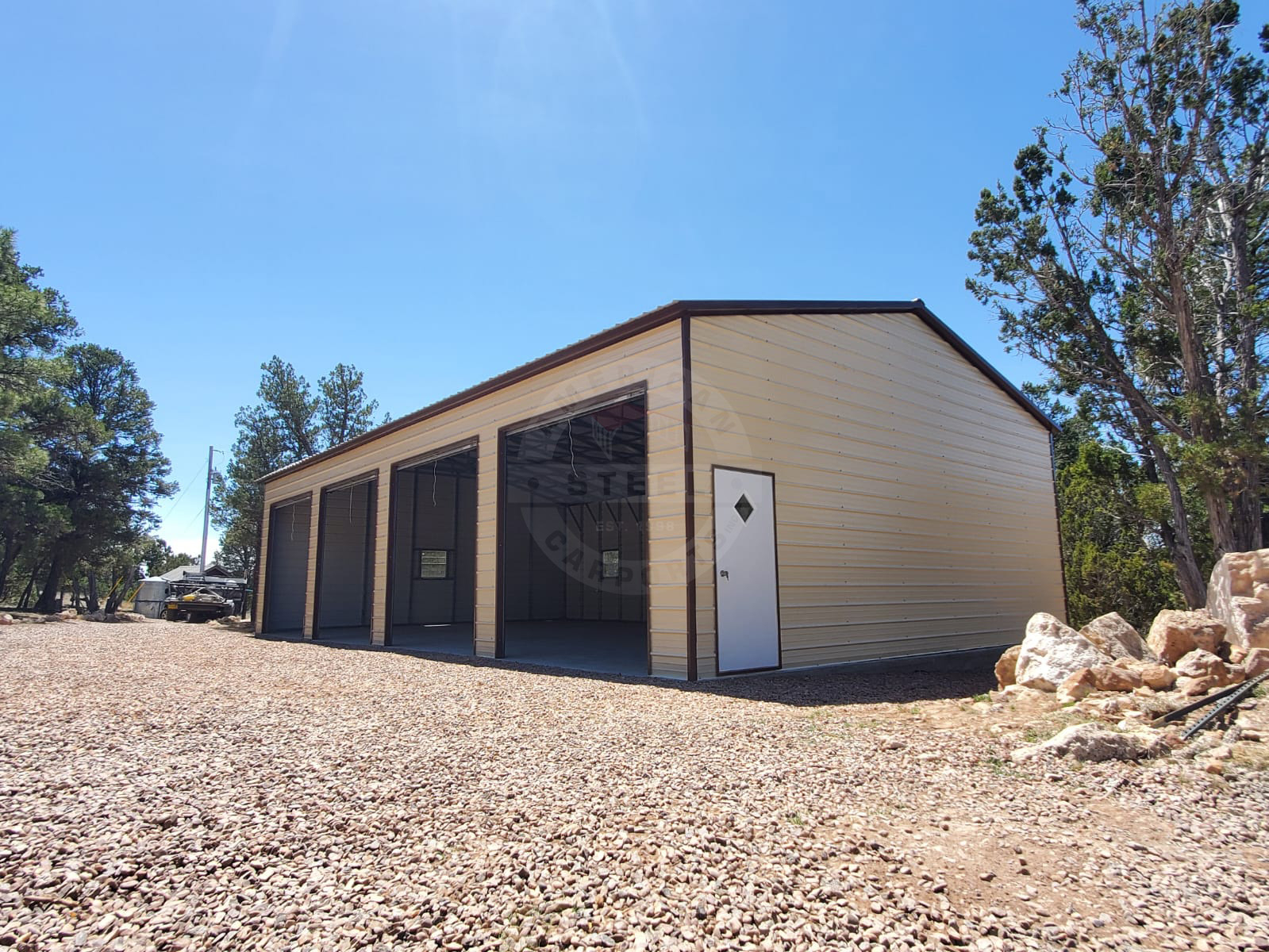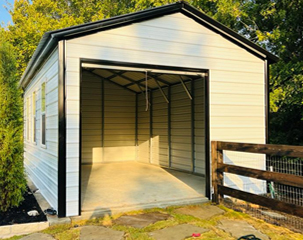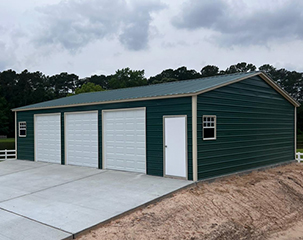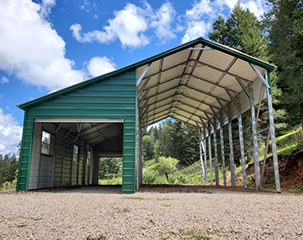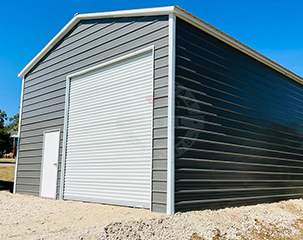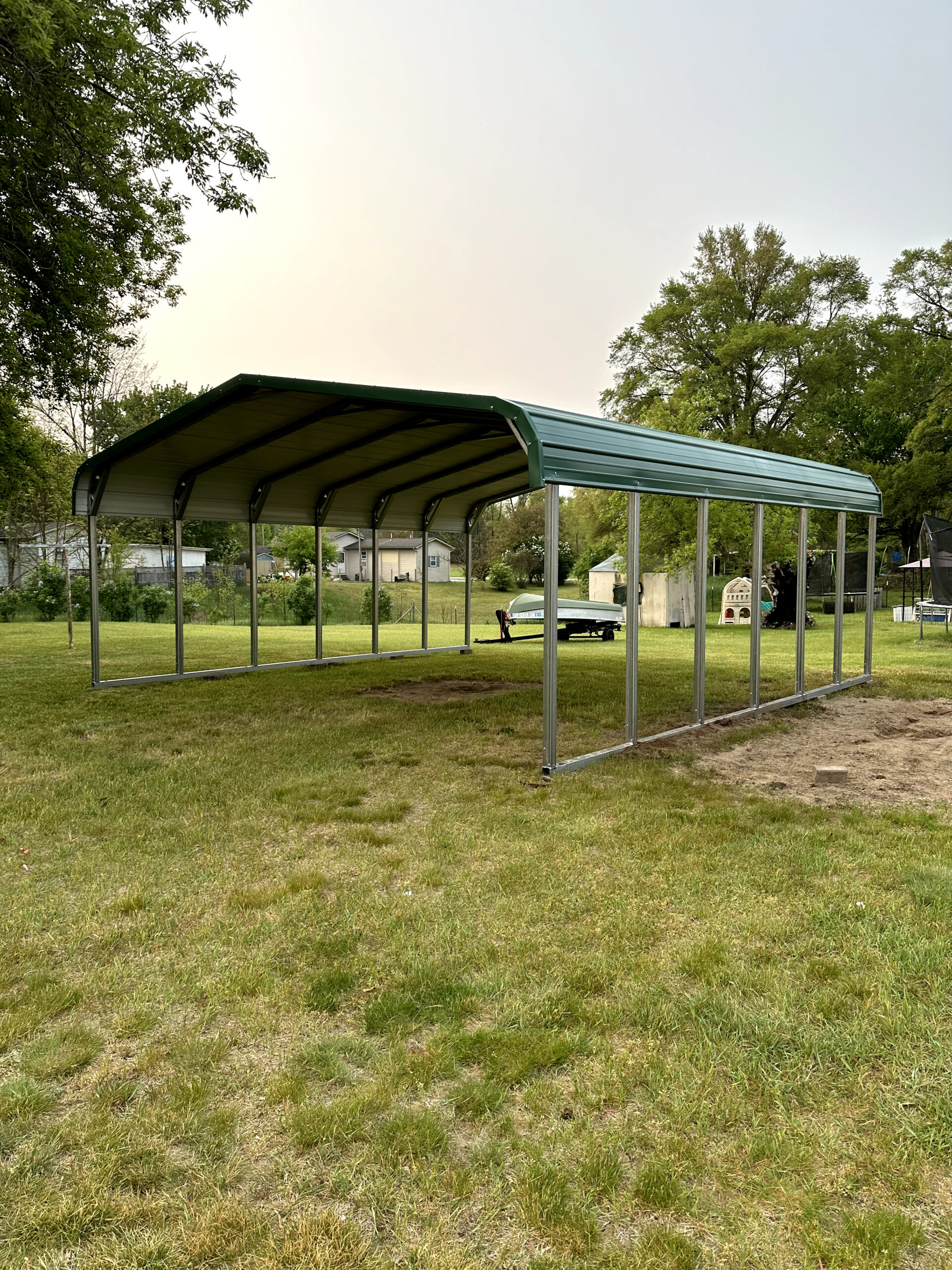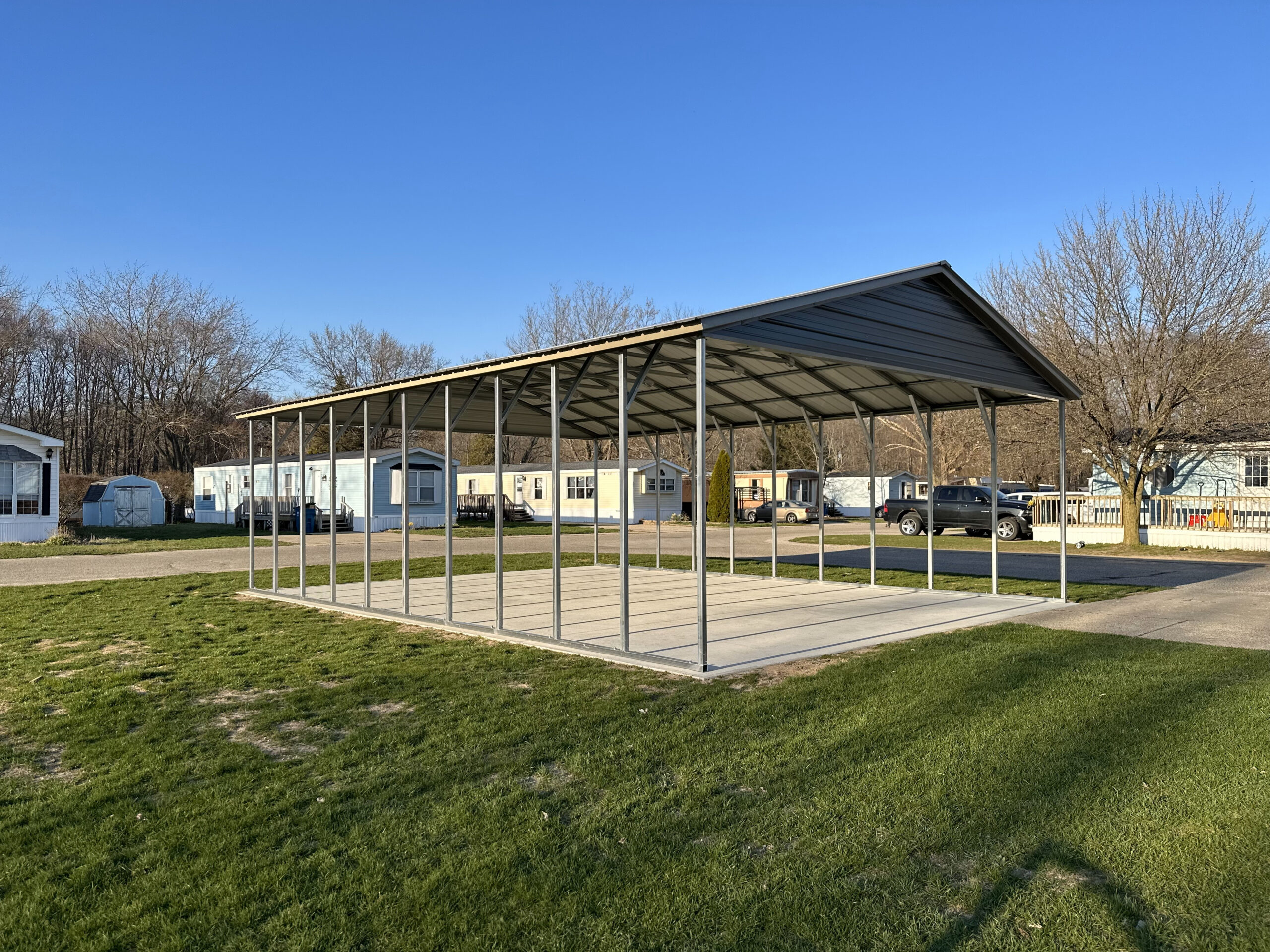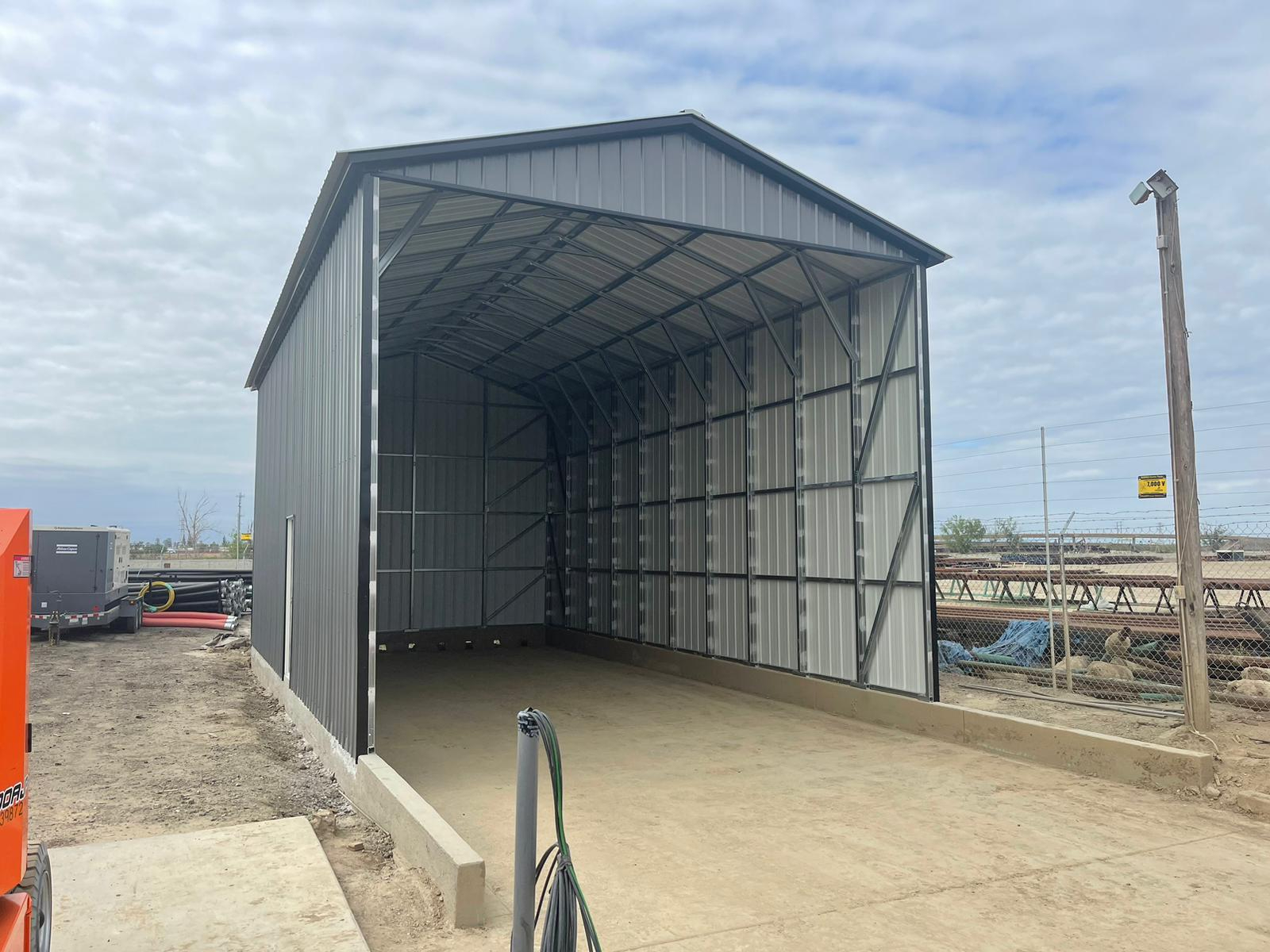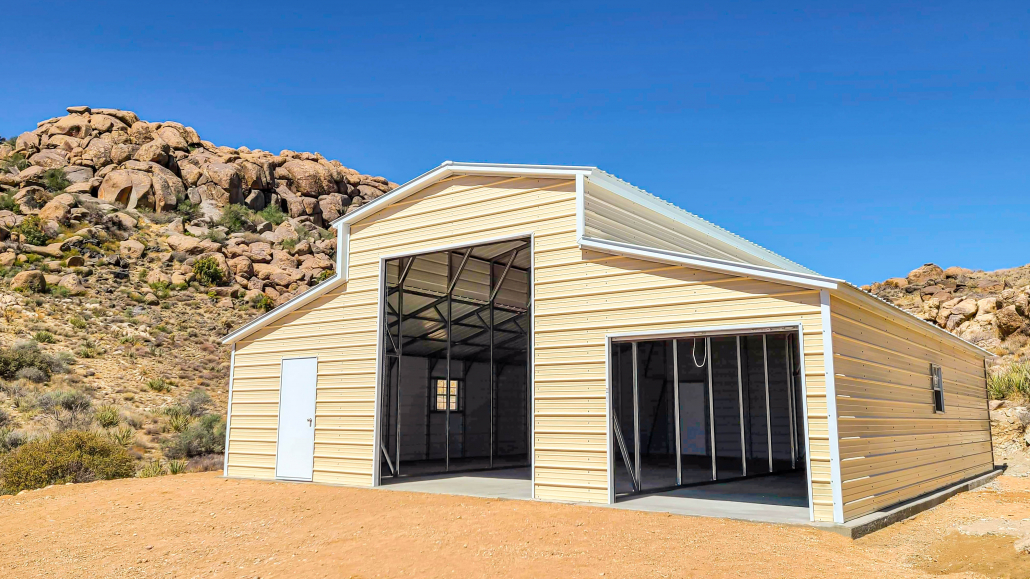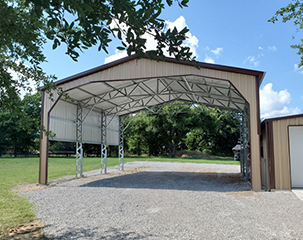We know that metal is a good conductor of cold and heat, and when temperature shifts inside or outside the metal building, water tends to condense on the metal sheets.
Insulation can be used to avoid the issue of water condensation. When heat transfers from the outside to the inside of a building, the insulation works as a barrier. Additionally, by reducing the temperature of the metal, the insulation reduces condensation.
The definition of R-Value is “the capacity of an insulating material to resist heat flow. The higher the R-value, the greater the insulating power.” (Webster Dictionary)
Types of Insulation:
There are various styles of insulation. We’ll look at some below while highlighting the benefits.
Loose Fill Insulation
Loose-fill insulation consists of small particles of fiber, foam, or other materials. The most common types of materials used for loose-fill insulation include cellulose, fiberglass, and mineral (rock or slag) wool. (1)
This type of insulation is installed by blowing it into tiny holes that persist in the walls. It is one of the most environmentally-friendly, and it is a good way to save money on utility expenses.
Blanket Insulation
Blanket insulation is the most common and widely available type of insulation. It comes in the form of batts or rolls. It consists of flexible fibers, most commonly fiberglass. You also can find batts and rolls made from mineral (rock and slag) wool, plastic fibers, and natural fibers, such as cotton and sheep’s wool. (2)
This is mainly for recently installed buildings. Large rolls are used to fill pre-cut gaps in buildings. It must be installed correctly or it won’t function properly.
Rigid Board Insulation
Rigid foam can be used in walls, roofs, and foundations, for retrofits or new construction. Most varieties of foam have a higher R-value per inch than fiberglass, cotton, or cellulose. Rigid foam sheets are sold in several thicknesses; most lumberyards carry insulation ranging from 1/2 in. to 2 in. thick. Thicker sheets (up to 6 in. thick) are usually available by special order. (3)
Spray Foam Insulation
Spray foam insulation is an insulation and air barrier material that seals walls, floors and ceiling cavities against air movement. It’s often used in spaces around electrical outlets and light fixtures, and also where walls meet windows and doors. (4)
(1) www.energy.gov/energysaver/weatherize/insulation/types-insulation
(2) www.daviddarling.info/encyclopedia/B/AE_blanket_insulation.html
(3) www.greenbuildingadvisor.com/green-basics/rigid-foam-insulation
(4) https://www.retrofoamofmichigan.com/blog/spray-foam-insulation-what-its-made-of-how-it-works

